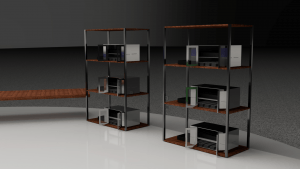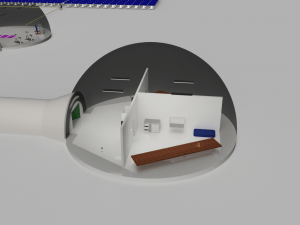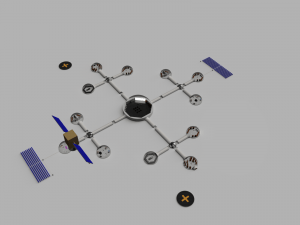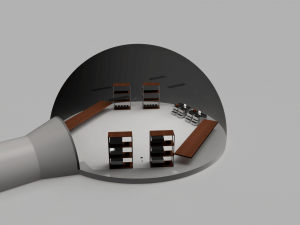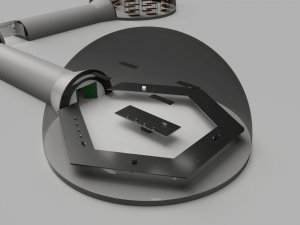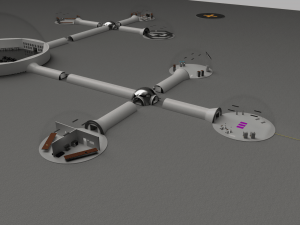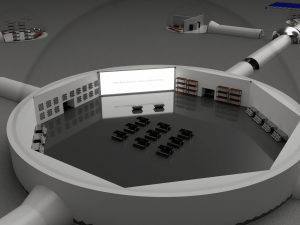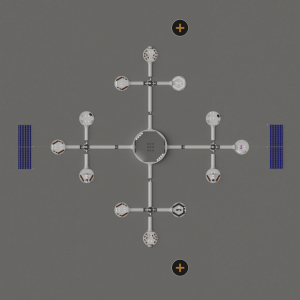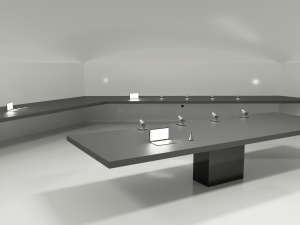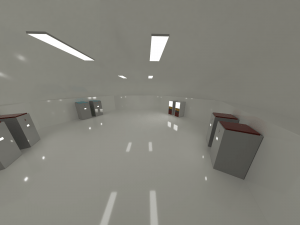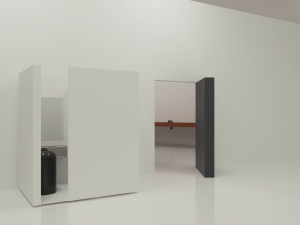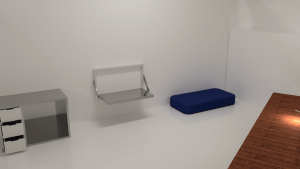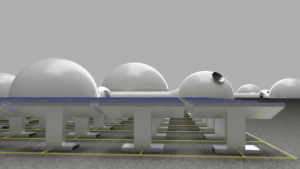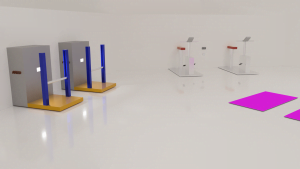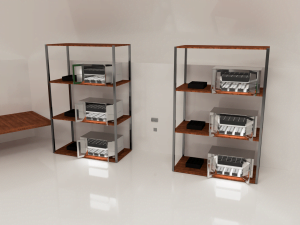Moon Camp Pioneers Winners
Team: Moffelen Op De Maan
Bertrand Russel College Assendelft Netherlands 15 to 16 years old Second Place – ESA Member States and Canada
External viewer for 3d project
|
Project description
[42] |
|||
|
Describe your Moon Camp project.
We have decided that this trip is not just an expedition, but also the start of a new era in space discovery. By establishing a solid, expandable / modular moonbase, we will assist our peers in colonizing the moon in the foreseeable future. This is most certainly not a temporary settlement, because the base has been designed to be near self-sufficient ( the aspiration is there ). Our design is ( in our opinion ) an “endgame” goal for the moon, which will take some time to take shape. Furthermore, by allowing some He3 transportation to earth, we will be able to supply the earth with a sustainable source of energy. This will also pay back the great cost of the project ( attract investors ). Not only will this be a pioneering trip, but also a great way for scientists to gather information about the moon and its effect on life. Where do you want to build your Moon Camp?
We want to build our Moon Base on the edge and partially inside the Shackelton crater. This is because on the southern pole of the moon, the rim is almost continuously exposed to sunlight . Because of this, the fluctuations of the temperature change less dramatically compared to other places on the moon.This would be extremely beneficial to providing a climate in which the astronauts can survive. Furthermore, some studies indicate that there might be water on this part of the moon, which is critical. Since the sunrays almost always reach this part of the moon, we will not need unnecessarily large batteries to provide power when the solar panels aren’t able to supply electricity. How do you plan to build your Moon Camp? Describe the techniques and materials you would use.
When our moonlander arrives at its destination, the astronauts initiate a system that ejects and inflates a big tent. This will be the first component of the moonbase. After it has been deployed, the team will turn on a movable 3d printer, which will make sure that there is a thick layer of regolith on the inflated “tent”. This ensures a better protection against all the dangers of the moon. After spending the first day or two scanning the environment, the printer will continue fabricating multiple segments of the final product. Since the design is modular, the printer will be able to keep the same .gcode file for printing. Slowly, the base will begin to become larger, grand enough to start settling in. All the domes will be covered with a metallic paint layer covering the inside of the base, this provides an extra layer against radiation. |
|||
|
Water
|
Food
|
Electricity
|
Air
|
|
Supplying a community with water on the moon would seem like a extremely daunting task, which at first seems true. According to a rapport published by NASA, water in the form of ice has been confirmed on the poles of the moon. Since we like to build on the southern part of the moon, we would be able to access a source of water. We will to this by using ESA’s PROSPECT system. Furthermore, extracting water from air and from urine would be important in being efficient in reusing water. We will try to create a closed system ( regarding the water ). |
Taking care of food would be a big challenge. For the first two months or so, astronauts would have to consume astronaut food. If all goes accordingly, astronauts will be able to switch to a partially plant based diet. This will be provided by the growns plants and algae which by then will be able to be harvested. The diet of the astronauts ( and thus their caloric intake ) will be calculated on earth to improve the efficiency of the greenhouse. This will reduce to need of unnecessary amounts of food. |
Our main source of power will come from high-efficiency solar panel “parks”. These will be exposed to a near perpetual amount of sunlight, which makes it so that we do not need enormous batteries for storage. We considered harvesting and using He3, but we concluded that this would be extremely hazardous and not viable in this early stage of development. We understand that heating the Moon Camp will cost power as well, that is why our main heat source will be excess heat ( from machines ) and that’s why we have so many solar panels. |
We need approximately 78% nitrogen and 20% oxygen to make air breathable. In the beginning this will be achieved by using compressed air from earth. Later we can extract oxygen from the moon surface itself in a process called molten salt electrolysis. This will turn moon soil into oxygen and other metals. The plants inside also help. As of now, there isn’t any evidence that there are huge quantities of nitrogen on the moon. If these are found along the way we can use those to make the air breathable. Until then we need to use compressed nitrogen from earth. |
|
How do you plan to build your Moon Camp? Which materials would you use?
[54] |
|||
|
The environment on the Moon is very dangerous for the astronauts. Explain how your Moon Camp will protect them.
When sending our astronauts to the moon, we will try to put all the cargo around them ( as if they’re in a protective shell ). This is so that we can prevent lots of radiation entering their body, which would be malignant. Setting up the first segment will be executed by robots so that the astronauts aren’t exposed to direct radiation from the sun. Furthermore, a part of the camp will be constructed inside the Shackleton crater, which will greatly reduce the amounts of radiation entering that part of the Moon Camp. After the first segment has been finished, the astronauts can leave their spacecraft. The segments are largely made out of metals extracted from the regolith, covered in another thick layer of regolith. Because of the placement and the sheer amounts of material, the impact of the meteor will be nullified. |
|||
|
Describe a day on the Moon for your Moon Camp astronaut crew.
The astronauts work in shifts, so not all their sleeping schedules will be equal. The day is divided into three shifts: morning, afternoon, evening. Morning and evening are occupied by one astronaut each, while afternoon has two. After waking up, astronauts will have to do some stretching, dress themselves and eat their meal. Following the stretching, the astronauts will look at the control board in their main room. Errands are shown on this screen, from high to low priority. At the end of their shift, these tasks have to be completed. After having finished all their assignments, their shift will be over ( the duration can variate, but minimal of 9 hours ). Depending on the time of the shift, they can choose the following: sleep, relaxation or their obligatory daily exercise. Relaxation includes reading (e)books, watching a movie, playing games, etc. To maintain their (custom) circadian rhythm, they will be exposed to artificial lighting depending on their shifts. To avoid the astronauts from going insane, they’ll be given a personal goal. Also, they would be able to call their relatives and their loved ones. The astronauts have a wild variety things they can study, such as; influence of microgravity, composition of moon soil, etc.
In the long run the goals might change such as the moon base being a interstellar airport to go to further destinations (because of less fuel required when departing from the moon). This will have a huge impact on the tasks the astronauts will have to complete. |
|||


